|
It is our great pleasure to share with you the first issue of our new SEAA newsletter in email format. First of all, a big thank you to Mitchell Ma who has been working tirelessly on gathering and editing contributions, to Mike Storozum for working on layout and editing, and to all contributors to sharing their news and stories with us. We hope you find them as interesting as we did and you will send us your own news for future newsletters to spread the word on your work, discoveries, publications, and any other information in your particular areas of expertise and/or region and/or institution that might be of interest to the SEAA community.
We would also like to update you on a few events that we are planning. As noted in a separate email, we have decided to hold events with all three applicants for the spot of SEAA10 local organizer to reflect the various interests of the diverse SEAA community and do justice to the three excellent proposals. We are thus planning to hold the following events:
- SEAA and the Sainsbury Institute for the Study of Japanese Arts and Cultures are currently working to develop a workshop/conference on ‘The Last Burial Mounds in East Asia and Europe’ in the spring of 2025
- SEAA10 will be held as an in-person event at the University of Aberdeen in August 2025
- SEAA11 will be held at Sichuan University in 2026 or 2027
There will also be an event this summer that you may be aware of, namely the hybrid conference organized with the Beijing University of Science and Technology on August 11–13, 2023. There is still time to submit an abstract here until 30 June.
We are also preparing a survey to get further input from the membership as to how we may serve you better. This survey will go out in September 2023 and mostly be focused on what kind of information our website should provide and what kind of events you would like to see, but there will also be space for other suggestions. Please stay tuned.
Now, please enjoy the various news items and stories we have assembled for you below and consider submitting your own news and stories for future issues of the newsletter.
Wishing you a great summer,
The SEAA Executive Board (Anke Hein, Siran Liu, Jina Heo, and Ray Liu)
General Notices
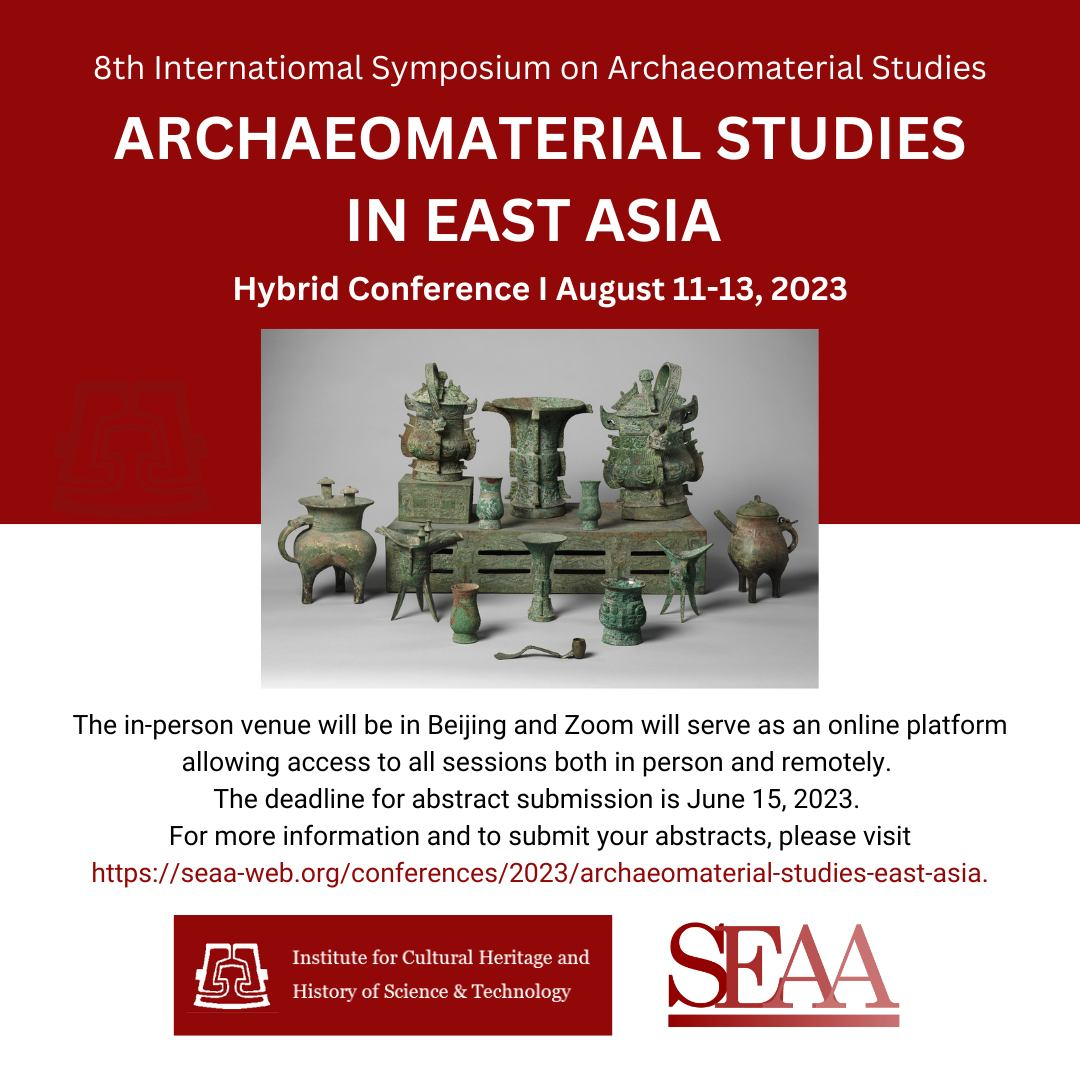 Call for Abstracts Call for Abstracts
The upcoming "Archaeomaterial Studies in East Asia" conference, jointly organized by the Society for East Asian Archaeology (SEAA) and the Institute for Cultural Heritage and History of Science & Technology at the University of Science and Technology Beijing (USTB), will be a hybrid event held on August 11-13, 2023. The conference will have an in-person venue in Beijing, and Zoom will serve as the online platform, providing access to all sessions both in person and remotely. Please note the submission deadline is now extended to June 30th. Submit your abstract here.
Report on East Asia-related Events at the 2023 Society for American Archaeology Conference
By: Andrew Womack, SEAA North American Regional Representative
The 2023 Society for American Archaeology (SAA) conference brought together thousands of archaeologists working around the world for four days of sessions, forums, posters, discussions, and socializing in Portland, OR, USA. This included dozens of presentations related to archaeology in East Asia as well as the annual get-together for Archaeologists of East and Southeast Asia. Some of the larger sessions dedicated to whole or part to eastern Asia included several symposia focusing on northern and central Asia, including Northeast Asian Prehistoric Hunter-Gatherer Lifeways, Archaeology of Medieval Eurasian Urbanism, Advances and New Perspectives in Central Asian Archaeology, and From the Altai to the Arctic. Country-specific sessions included Populations of Early Medieval China, Archaeology and Indigenous Issues in Hokkaido Island, Japan, Social and Environmental Interactions on Coasts and Islands in Korea, as well as The Chengdu Plain Archaeological Survey poster session, among others. Several thematic sessions also had significant contributions related to East Asia, including sessions on ceramic technology, beer, climate change, human-animal interactions, and archaeology of the Asian-American diaspora.
On Saturday night more than 100 archaeologists gathered at the conference hotel for the get-together for Archaeologists of East and Southeast Asia. There SEAA president Anke Hein and former president and the current SEAA representative to the SAA Francis Allard provided updates on upcoming SEAA conferences, SEAA’s expansion to multiple social media platforms, and publication opportunities in a variety of journals including Asian Perspectives and Archaeological Research in Asia. Alison Carter also provided updates on the Society for Southeast Asian Archaeology, while Antiquity editor Robert Witcher encouraged attendees to consider submitting their work to Antiquity for publication. The event provided a great reunion for archaeologists working across the region, many of whom had not seen each other since 2019 or earlier. We are looking forward to more excellent sessions, discussions, and reunions next April at the SAA conference in New Orleans.
Notes from the Field
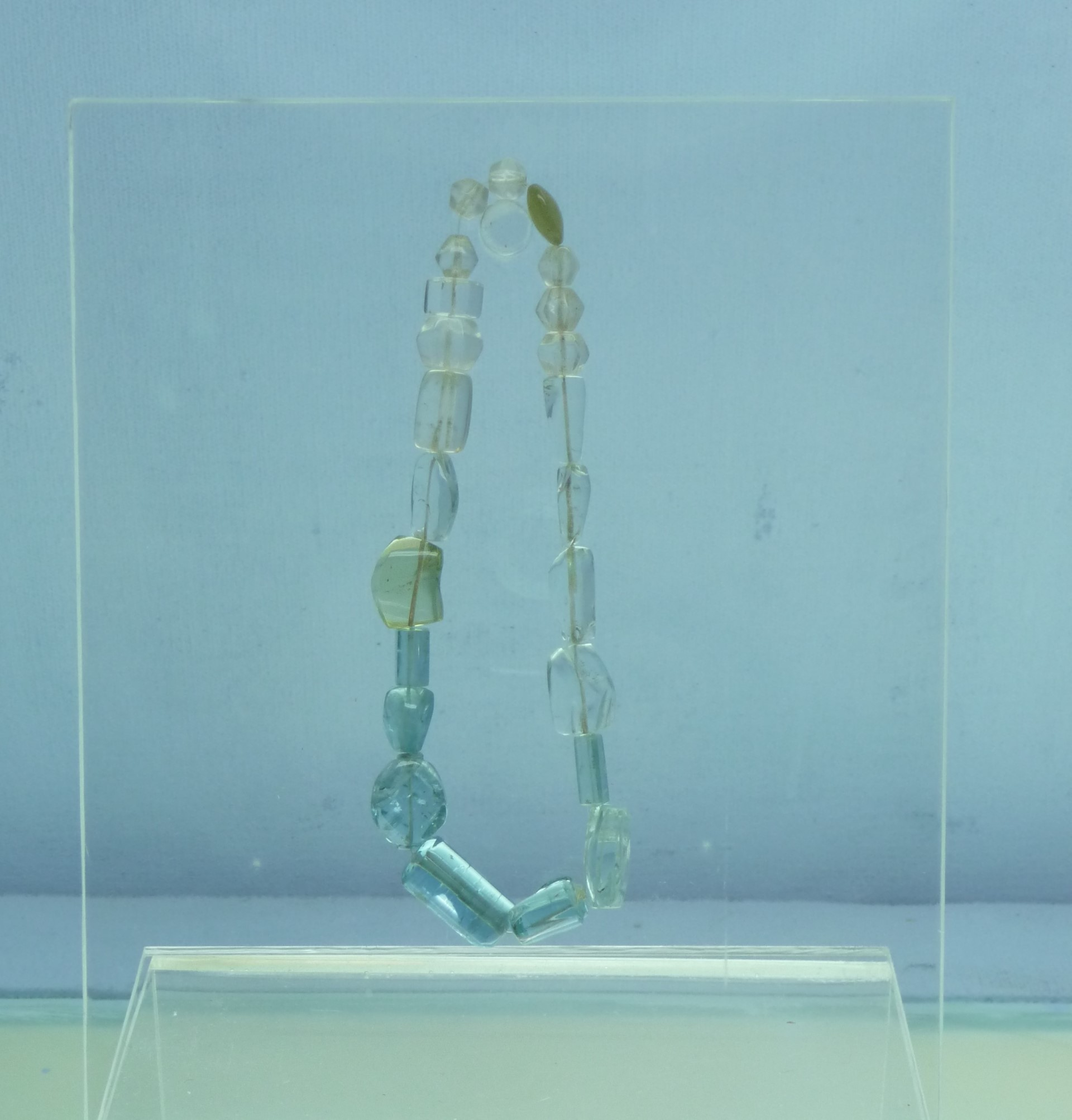
Hepu and the Maritime Silk Route
By: Francis Allard (Professor, Department of Anthropology, Indiana University of Pennsylvania)
The coastal site of Hepu in present-day Guangxi is mentioned as a port city in a passage of the Han Shu, which remarks on a trading mission to (possibly) India during the first century BCE. In order to further clarify the nature, timing, and extent of contacts between Hepu and regions situated further south along the "Maritime Silk Route," this project is presently tabulating all artifacts and other attributes of the site’s 500 or so Han – Three Kingdoms period burials published to date. Particular attention is given to the 35,000 glass and stone beads recovered from the burials.
 Discover Ancient Cast Iron Production in Xinjiang, China Discover Ancient Cast Iron Production in Xinjiang, China
By: Fan Yang (Ph.D. candidate, Institute for Cultural Heritage and History of Science and Technology, University of Science and Technology Beijing)
Xinjiang, located on the northwest frontier of China, serves as the heartland of Eurasia and a crossroad of Eastern and Western civilizations since antiquity. Recently, a joint research group of the University of Science and Technology Beijing (USTB) and Xinjiang Provincial Institute for Cultural Relics and Archaeology embarked on a comprehensive field study in Kuche (库车) County, known as Kucha in antiquity. Historical literature has recognized the region as an important metallurgical center, and our team has uncovered significant collections of cast iron remains that stand as a testimony to its industrious past. This ongoing research not only enhances our understanding of the region's past but also its role in the larger narrative of Eurasian history.
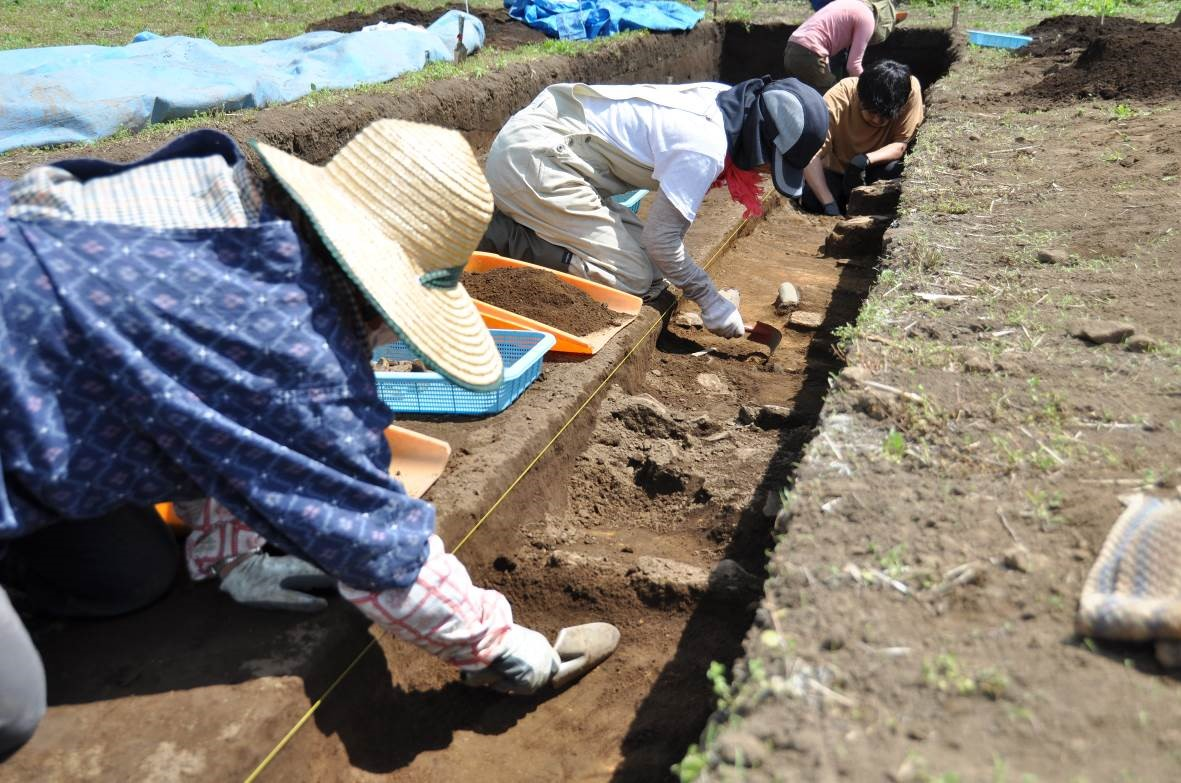 Collaborative Excavations: Unearthing Middle Jomon Settlements with Local Community Collaborative Excavations: Unearthing Middle Jomon Settlements with Local Community
By: Kurando Soejima (Curator, Idojiri Archaeological Museum)
The southwestern foot of Mount Yatsugatake in Central Japan is home to many archaeological sites dating back to the Middle Jomon Period (approximately 5500 to 4500 years ago). Among these Jomon sites, Sori in Fujimi-town, Nagano Prefecture, stands out as a renowned location. Since 2021, we have been conducting excavation surveys to gain a deeper understanding of this ancient village, leading to significant archaeological findings, including numerous Jomon pottery pieces and stone tools. In addition to our archaeological research, we actively engage with local residents, involving both experts and nearby individuals during the excavation process. Our aim is to not only obtain research results but also foster a sense of local pride. Through this collaborative approach, we strive to promote understanding of our research and garner support for preserving these valuable archaeological sites within the community.
Featured Member

Pei-Lin Yu is an Affiliate Associate Professor with the Anthropology Department at Boise State University. She is a Taiwanese-American ethnoarchaeologist with 35 years of experience in public and academic archaeology. She is currently a Tribal Liaison with the US Army Corps of Engineers. Her research interests revolve around the interface between hunter-gatherers and gardening and small-scale farming. She is presently engaged in studying the evolutionary role of gardening during the Neolithic period in Taiwan, Southeastern China, and southern Japan as this area was a crucible for the sea-faring gardening societies of Oceania. This includes ethnoarchaeology among the Amis of eastern Taiwan and behavioural ecology approaches to gardening in the broader sense. Recently, she participated in an Indigenous Archaeology workshop at National Cheng Kung University, to improve archaeologist engagement with Indigenous interests and values. Recent publications include the article entitled Modeling Incipient Use of Neolithic Cultigens by Taiwanese Foragers: Perspectives from Niche Variation Theory, the Prey Choice Model, and the Ideal Free Distribution, published in Quaternary; Archaeology on the Threshold: Studies on the Process of Change, an edited volume concerning the archaeological study of transitions; and East Asia's Island Gardens: A Neolithic Journey, currently in preparation. For more information, visit Pei Lin-yu's homepage.
Upcoming Events
 The 2023 SOAS Taiwan Studies Summer School Program, run by the SOAS Centre of Taiwan Studies, is excited to offer a 3-day Summer School programme filled with engaging talks, seminars, and roundtables from the afternoon of 28–30 June 2023. The CTS Summer School is free and open to the public, please register your attendance by 27 June. For more information, please see the following link. The 2023 SOAS Taiwan Studies Summer School Program, run by the SOAS Centre of Taiwan Studies, is excited to offer a 3-day Summer School programme filled with engaging talks, seminars, and roundtables from the afternoon of 28–30 June 2023. The CTS Summer School is free and open to the public, please register your attendance by 27 June. For more information, please see the following link.
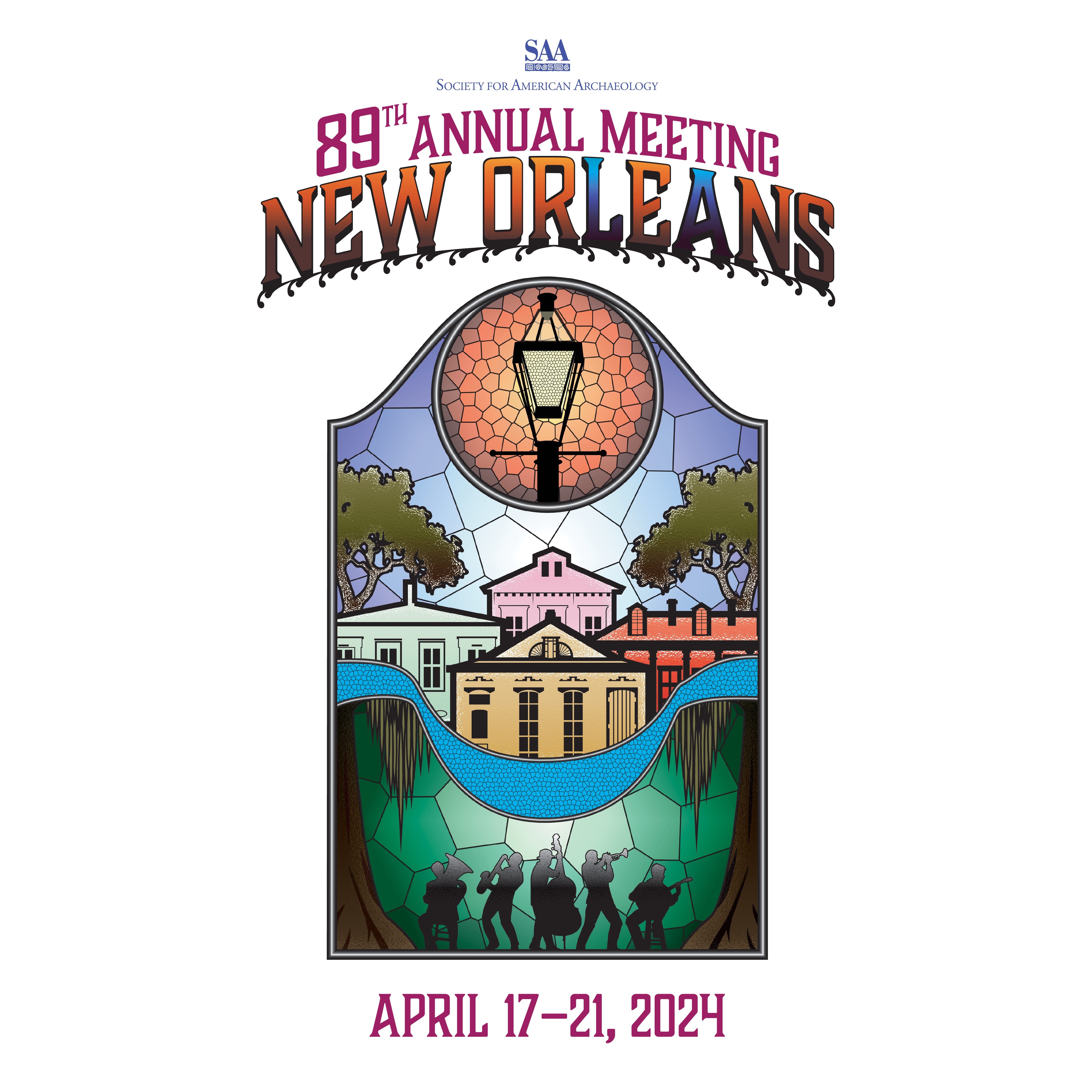 The 89th Annual Meeting of the Society for American Archaeology will be held in New Orleans, Louisiana. The program is composed of general sessions, symposia, forums, debates, lightning rounds, posters, and workshops. The SAA Annual Meeting is the largest gathering of archaeologists of the Americas, and it offers unparalleled networking opportunities in its exhibit hall, excursions, and receptions and career-development opportunities. The deadline for submissions is September 7, 2023. The meeting dates are April 17-22, 2024. For more information, please visit the following link. The 89th Annual Meeting of the Society for American Archaeology will be held in New Orleans, Louisiana. The program is composed of general sessions, symposia, forums, debates, lightning rounds, posters, and workshops. The SAA Annual Meeting is the largest gathering of archaeologists of the Americas, and it offers unparalleled networking opportunities in its exhibit hall, excursions, and receptions and career-development opportunities. The deadline for submissions is September 7, 2023. The meeting dates are April 17-22, 2024. For more information, please visit the following link.
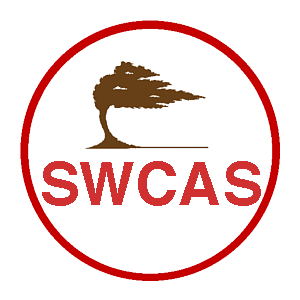 The 2023 SWCAS Annual Meeting, organized by the Southwest Conference on Asian Studies, is issuing a call for papers for the event taking place at the University of Houston, Houston, on November 3-4, 2023. The theme of the conference is "Voices and Visions: New Perspectives in Asian Studies." The conference welcomes individual and panel proposals on all topics related to Asian Studies, with a particular emphasis on diverse voices and visions that offer fresh insights into various aspects of Asia. The submission deadline is July 1st, 2023. For more information, please visit the following link. The 2023 SWCAS Annual Meeting, organized by the Southwest Conference on Asian Studies, is issuing a call for papers for the event taking place at the University of Houston, Houston, on November 3-4, 2023. The theme of the conference is "Voices and Visions: New Perspectives in Asian Studies." The conference welcomes individual and panel proposals on all topics related to Asian Studies, with a particular emphasis on diverse voices and visions that offer fresh insights into various aspects of Asia. The submission deadline is July 1st, 2023. For more information, please visit the following link.
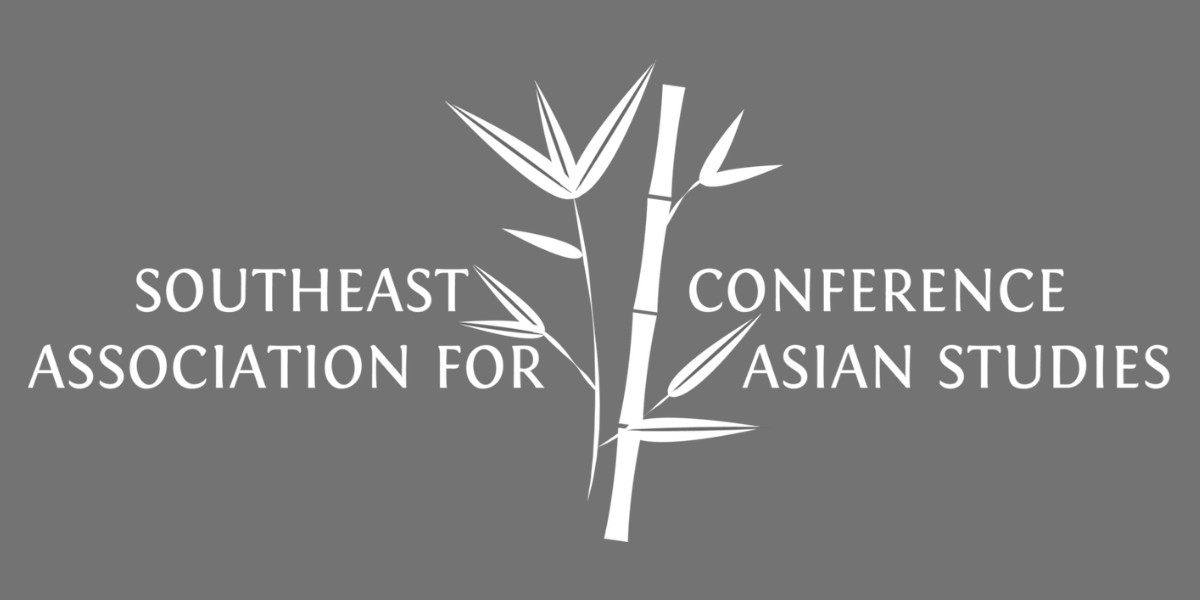 The 63rd annual meeting of the Southeast Conference of the Association for Asian Studies, with the theme "Regional and Global Flows," is scheduled to take place on January 26–28, 2024, at Wake Forest University in North Carolina. The deadline for proposal submissions is October 30, 2023. For additional details, please refer to the following link. The 63rd annual meeting of the Southeast Conference of the Association for Asian Studies, with the theme "Regional and Global Flows," is scheduled to take place on January 26–28, 2024, at Wake Forest University in North Carolina. The deadline for proposal submissions is October 30, 2023. For additional details, please refer to the following link.
Recent Publications
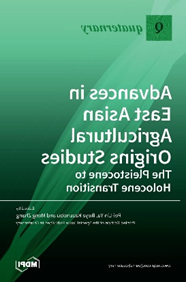 Pei-Lin Yu, Ikeya Kazunobu, and Meng Zhang have published an a special issue entilted Advances in East Asian Agricultural Origins Studies: The Pleistocene to Holocene Transition in the journal Quaternary. The special issue can be accessed free of charge through the following link. Pei-Lin Yu, Ikeya Kazunobu, and Meng Zhang have published an a special issue entilted Advances in East Asian Agricultural Origins Studies: The Pleistocene to Holocene Transition in the journal Quaternary. The special issue can be accessed free of charge through the following link.
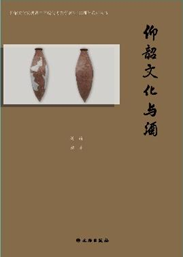 Li Liu has published an edited volume in Chinese entitled 仰韶文化与酒 (Fermented Beverages in Yangshao Culture) through the Cultural Relics Publishing House in China. Although the book was published at the end of 2022, it was printed in 2021 to coincide with the 100th anniversary of Chinese Modern Archaeology, which was celebrated in 2021. Li Liu has published an edited volume in Chinese entitled 仰韶文化与酒 (Fermented Beverages in Yangshao Culture) through the Cultural Relics Publishing House in China. Although the book was published at the end of 2022, it was printed in 2021 to coincide with the 100th anniversary of Chinese Modern Archaeology, which was celebrated in 2021.
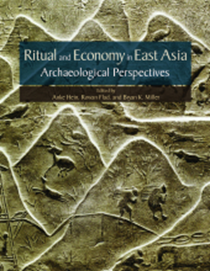 To commemorate Lothar von Falkenhausen's 60th birthday, Anke Hein, Rowan Flad, and Bryan K. Miller have compiled eighteen scholarly essays that explore the interplay of art, economy, and ritual in ancient East Asia. The contributions are categorized into four themes: "Ritual Economy," "Ritual and Sacrifice," "Technology, Community, Interaction," and "Objects and Meaning." The compiled work, entitled Ritual and Economy in East Asia: Archaeological Perspectives, reflects Falkenhausen's long-standing research interests. The publication, scheduled for June 2023, encompasses the theoretical, methodological, and historical aspects he has examined throughout his career in scholarship and teaching. For more information, please visit the following link. To commemorate Lothar von Falkenhausen's 60th birthday, Anke Hein, Rowan Flad, and Bryan K. Miller have compiled eighteen scholarly essays that explore the interplay of art, economy, and ritual in ancient East Asia. The contributions are categorized into four themes: "Ritual Economy," "Ritual and Sacrifice," "Technology, Community, Interaction," and "Objects and Meaning." The compiled work, entitled Ritual and Economy in East Asia: Archaeological Perspectives, reflects Falkenhausen's long-standing research interests. The publication, scheduled for June 2023, encompasses the theoretical, methodological, and historical aspects he has examined throughout his career in scholarship and teaching. For more information, please visit the following link.
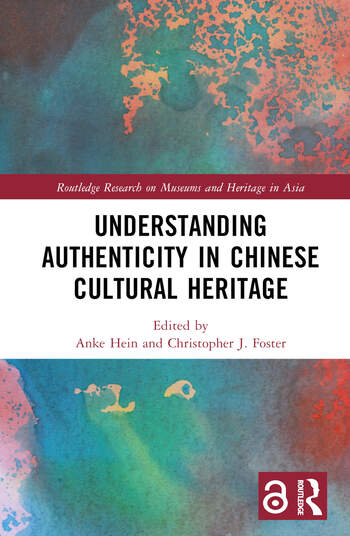 Understanding Authenticity in Chinese Cultural Heritage, edited by Anke Hein and Christopher J. Foster, has recently been published by Routledge London. This edited volume explores the construction of "authenticity" and its consequences in relation to Chinese cultural heritage, including objects, texts, and intangible practices associated with China's past. The book can be purchased through the following link. Use code ESA31 until June 30, 2023, to receive a 20% discount. Understanding Authenticity in Chinese Cultural Heritage, edited by Anke Hein and Christopher J. Foster, has recently been published by Routledge London. This edited volume explores the construction of "authenticity" and its consequences in relation to Chinese cultural heritage, including objects, texts, and intangible practices associated with China's past. The book can be purchased through the following link. Use code ESA31 until June 30, 2023, to receive a 20% discount.
Bingyan Wang, Huashi Liu, Yang Liu, Zejuan Sun, Xuexiang Chen, and Anke Hein have recently published an article entitled "Patterns of spread and adoption of millet agriculture along the eastern rim of the Tibetan Plateau: Archaeobotanical evidence from Houzidong, Southwest China (4200–4000 cal. BP)" in the journal Archaeological Research in Asia. The article is open access and can be accessed via the following link.
Please add info@seaa-web.org to your safe sender list in order to avoid official SEAA emails being filtered as spam.
|